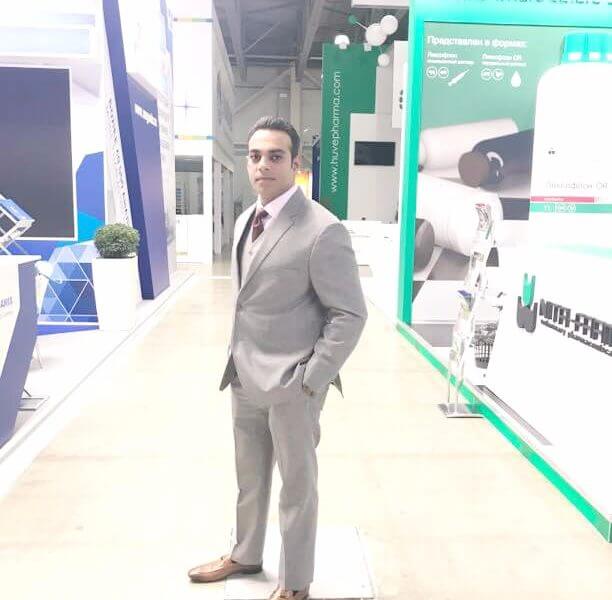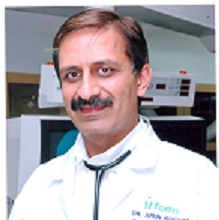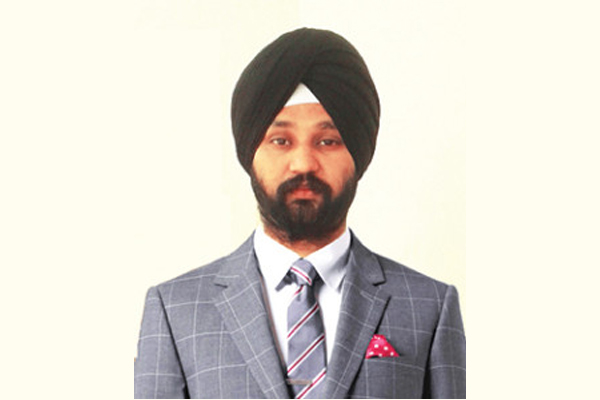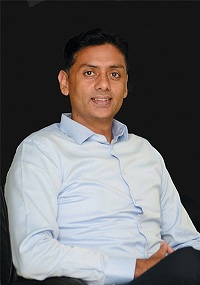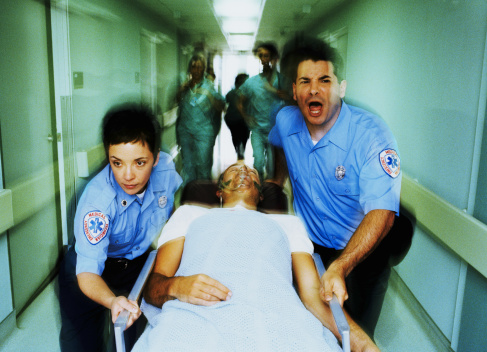

Since independence, we have come a long way in terms of various advancements in healthcare. Recently, medical researchers during conferences and summits in luxury hotels of metropolitans have some fancy terms to talk about such as IOT in healthcare, e-health, m-health, virtual clinic, remote surgeries, robotic operations, EMRs, EHRs, Aadhar integration, big data analytics on the EMRs, advance prediction of an outbreak, promoting generic drugs, auto sutures and what not. This clearly shows India 2020 — the vision of our leaders — would soon be a reality, resulting into easy access to quality doctors and the basic healthcare infrastructure.

According to the Hindu mythology, Upanishads were written thousands of years back to form the core spiritual thought of vedantic Hinduism. One famous verse from it is: “Om Sarve Bhavantu Sukhinah, Sarve Santu Nir-Aamayaah, Sarve Bhadraanni Pashyantu, MaaKashcid-Duhkha-Bhaag-Bhavet”. It means: Om, May All become Happy, May All be Healthy (Free from Illness), May All See what is Auspicious, May no one Suffer in any way.
Out of these four messages conveyed by the verse, it is only illness which can be dealt with external agents and can be eliminated through scientific medical science or traditional alternative therapies of Ayurveda, Homeopathy, Yoga, Siddha, Unani, traditional Chinese medicine, etc.
But unfortunately, even today not all are able to access quality healthcare due to lack of good doctors and basic infrastructure.

Hence, the fact of the matter is that even after deploying so much efforts around the amalgamation of most innovative technologies in healthcare, we are still not able to provide a decent primary and secondary care to majority of Indians.
This is not because we lack tech advancements, but because of the lack of qualified doctors and hospitals in tier-II cities and towns of India. The doctor-to-patient ratio for rural India, as per the Health Ministry statistics, stands at 1:30,000, which is far below the WHOs recommended 1:1,000.
According to the consultancy firm KPMG, data from 2009 shows that India has 0.7 beds for every 1,000 people, the lowest among BRICS nations. To increase the bed capacity by one for every 1,000 people in tier-II cities, at least 500,000 beds are required. India needs between 3,333 and 7,142 hospitals in tier-II cities alone.
Of the $33 billion that Indians spend on healthcare per year, just 20 per cent is spent in smaller towns. For major surgeries and treatment of serious ailments, patients still travel from small towns to one of the seven large cities — Delhi, Mumbai, Chennai, Hyderabad, Bangalore, Kolkata and Ahmedabad.
Economics Around Healthcare
The Indian healthcare sector is expected to register a compound annual growth rate (CAGR) of 22.9 per cent during 2015-20 to grow to $280 billion. Rising income level, greater health awareness, increased precedence of lifestyle diseases and improved access to insurance would be the key contributors to growth.
The private sector has emerged as a vibrant force in India’s healthcare industry, lending it both national and international repute. It accounts for almost 74 per cent of the countrys total healthcare expenditure.
Telemedicine is a fast-emerging trend in India; major hospitals (Apollo, AIIMS, Narayana Hrudayalaya) have adopted telemedicine services and entered into a number of public-private partnerships (PPP). Apollo has 8,000 touch points at common service centres across India and is doing more than 7,000 remote doctor-patient consultations over video or call each day.
The telemedicine market in India is valued at $7.5 million currently and is expected to grow at a CAGR of 20 per cent to reach $18.7 million by the end of 2017. Further, presence of world-class hospitals and skilled medical professionals has strengthened Indias position as a preferred destination for medical tourism.
The Government of India aims to develop the country as a global healthcare hub. It has created the National Health Mission (NHM) for providing effective healthcare to both the urban and rural population. The government is also providing policy support in the form of reduced excise and customs duty, and exemption in service tax, to support growth in healthcare.
Investment in healthcare infrastructure is set to rise, benefitting both ‘hard’ (hospitals) and ‘soft’ (R&D, education) infrastructure. (Source: IBEF)
Opportunities in Digital Healthcare
The combination of all the above factors leads to the belief that doctors are gods.
As in India we have a huge scarcity of doctors, there is also a great opportunity to pick and organise each vertical of healthcare one by one. Moreover, advancements in the medical field and providing quality treatment are still big issues. To resolve these, visionary enterprises, including tech giant Microsoft, have floated ‘Project Hanover’ which aims to help doctors narrow their search for the right drug regime, sifting through medical papers to suggest the most effective treatments. IBM is also working on Watson Oncology, using 600,000 medical and 1.5 million patient records to explore better cancer treatments.
Another initiative from Microsoft seeks to apply Artificial Intelligence to radiology, using machine vision tools to analyse CT scans of tumours.
Microsoft isn’t the only tech company doing this. Google’s ‘DeepMind’ project is also exploring similar projects in the UK. DeepMind researchers are currently working with University College Hospital London to develop a tool to direct radiation treatments for head and neck cancers, and are also looking into early detection systems for eye diseases. So, although Microsoft may be pouring new resources into AI and healthcare, it’s certainly not the only player in this game. (Source: Microsoft)
Because of low doctor density in India’s tier II-III cities and towns as compared to tier 1 cities or metros, access to good doctors is a big challenge there. Traditional healthcare companies, such as, Apollo Telemedicine Services, are trying to bridge this gap by offering online video and audio consultations at the CSCs PAN India. In the past few years, a lot of startups have mushroomed around the app-based online doctor consultations. Also, many of them are focussing on setting up health kiosks in tier III towns to enable accessibility to a good doctor by connecting them virtually to a good doctor sitting in a remote location in tier I or II cities.
In tier I cities, the discovery of relevant doctors is a problem. To solve that, doctors’ listings, reviews and booking platforms have been built by Practo, doctorinciti, Qmedicine, Lybrate, 1MG doctors, Justdial, etc, to help patients book their appointments with relevant doctors based on their education, years of experience and other patients reviews. The sorting on the basis of prices can also be done. But this domain still needs refining as a lot of good doctors like Dr Sanjeev Bagai, who is a Padmashree awardee and a world-class pediatric surgeon, was given low rating on one platform and in the comments it was mentioned that the doctor was rude.
The primary job is to provide the best treatment to the patients and striving for good PR is secondary. Secondly, the best of the doctors get hardest of the cases where the mortality rate is higher, so will that doctor be considered as a bad doctor? Hence, rating a doctor might need a better algorithm and can be restricted to the medical fraternity only.
For doctors, there are various patient and hospital management systems which are primarily focussed on the patient’s data to run analytics on the same while helping the doctors streamline their bookings, payments, etc.
Addressing a bigger problem, i.e., the doctors education via peer-to-peer experiential learning are the likes of Curofy, PlexusMD, Docplexus, etc, where lakhs of doctors interact per day while discussing their cases and learning more about the medical advancements through peer-to-peer knowledge sharing.
E-pharma companies like 1MG, Netmeds, Pharmeasy, etc, are bearing the torch while leading the e-pharma race and educating people around various medications, their compositions and cheaper alternatives of the same generic drugs.
Here again, some doctors try prescribing the best brand of medicines which are costlier and after learning the compositions the patients opt for cheaper alternatives which might or might not have lower positive effects in treating the same ailment.
There can be two possibilities around the same, one could be that the prescribed company must have fed in the doctor and second could be that the particular make might have shown better results. In Homeopathy specifically, according to doctors and patients both, German brands like Dr Reckeweg and Schwabe have shown significantly better performance in treatments.
Another major opportunity lies in the medical tourism sector. According to a report, around 20 per cent of the total cost gets divided among the referees to bring patients from abroad to India for treatment. A lot of senior and branded medical consultant surgeons themselves have a specific price band for the same.
While most of the startups are focussing on the internet dependent app-based solutions, some are scaling rapidly with the cloud telephony technology without spending a penny on app downloads. Most of these startups are also keen on the volume and refinement of data captured with each consultation. The analytics plus the other possible pharma tie-ups leveraging the EMRs might be a suitable option as another revenue generating stream for these startups.
Social Issues Around Healthcare
Here is another interesting stuff to talk about. Sita (name changed) hailing from Ranchi, Jharkhand, was suffering badly with depression along with low BP due to her disturbed marriage life. Her in-laws were ashamed of taking her to a doctor, hence, mostly kept her secluded from other members in one room. Her entangled thoughts forced her to search Google for remedies to fight depression/low BP around 10 pm and she explored one such doctor consultation on-phone platform on Google. Her call was connected to Dr Bharti (Homeopath). The call went on for around 30 minutes while Dr Bharti (Homeopath) counselled her and a signed e-prescription containing the appropriate medicines reached her inbox by 11 pm as an SMS. In the morning, she asked her sister-in-law to get those medicines for her. After a couple of months, she started to recover well. (This is a true story of a consultation happened on AlternaCare in May 2016)
Hence, with the rise of virtual consultations, the elimination of social taboo prent around the diagnosis of mental, sexual, gynae problems in smaller towns is happening. A majority of women in smaller towns are still not in a position to see a doctor regarding such diseases as it is mostly looked down upon them by the society.
Once app-based solutions get popular or a large number of people adapt cloud telephony based solutions, which are HIPAA compliant and protects the PHI, patients can easily consult the doctors.
These consultations are mostly app based or on call. The doctor may not be physically present around the patient but they can interact over the platform which is highly secure and helps doctors understand and prescribe digitally. The patient can access the prescription on his/her mobile and email inbox. The process doesn’t involve using credit or debit cards as some of these platforms support carrier billing which is hassle-free.
To conclude, the opportunities are big in the Indian healthcare sector. Hopefully, India will see a highly efficient healthcare system in the coming years.
Authored by:

Abhishek Dwivedi, Co founder, Alternacare
Be a part of Elets Collaborative Initiatives. Join Us for Upcoming Events and explore business opportunities. Like us on Facebook , connect with us on LinkedIn and follow us on Twitter , Instagram.





